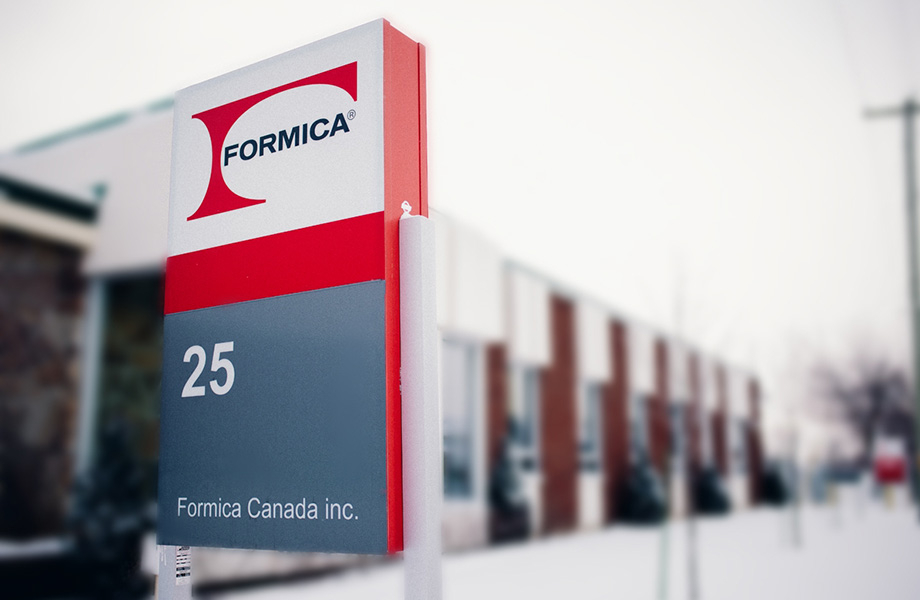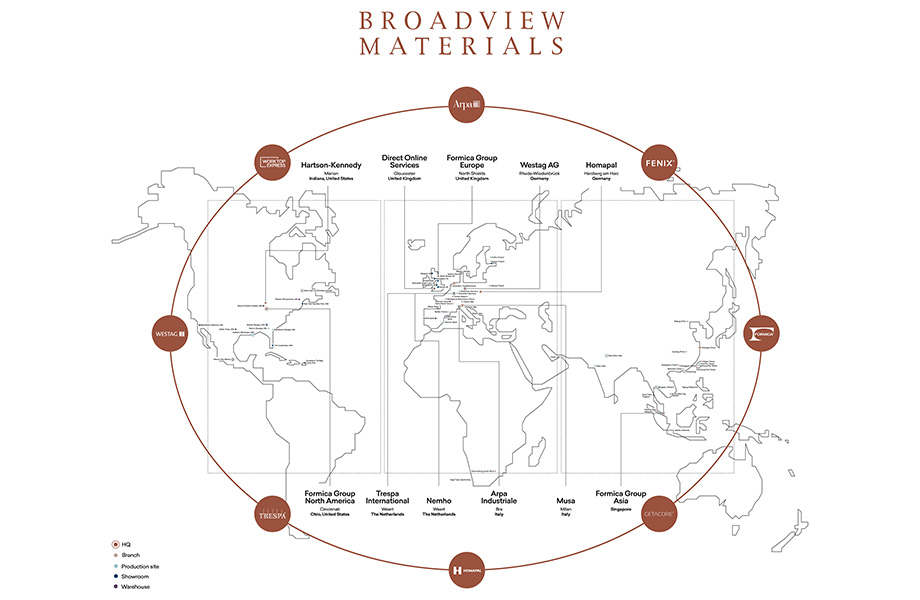Formica Canada Reduces Greenhouse Gases in Laminate Production by 5%
Formica Group lowered greenhouse gas emissions in its Canadian plant through a creative solution — reusing hot air during laminate production.

Improving Energy Efficiency in the Manufacture of Formica® Laminate
At Formica Group, we’re working to reduce our carbon footprint by analyzing the types and quantities of raw materials we use as well as the energy our manufacturing processes require. One such project uncovered an opportunity to reuse hot air from the ovens that cure sheets of newly pressed laminate. By installing innovative technology to recirculate this heat, Formica Canada reduced the greenhouse gases emitted during manufacturing by 5% while also lowering reliance on natural gas. Here’s how the team made it happen.
How the Heat Exchanger Works
There are several manufacturing steps required to create the high-quality Formica® Brand products known around the world for their durability and style. First, layers of kraft paper are treated with phenolic resin. Next, these papers are pressed together with a top sheet of melamine-infused décor paper, which gives each sheet of laminate its color, design aesthetic and impact resistance.
In the pressing process, the large steel plates that fuse these sheets under tremendous pressure operate in 212 degree Fahrenheit (100 degree Celsius) ovens heated by natural gas. Prior to this project, a jet fan brought fresh air from the outside to feed these ovens, and the resulting hot air was released through a chimney. The sustainability team identified this process as a major source of natural gas use and one with potential for improvement.
Formica Canada worked with engineering and environmental partners to install heat exchangers to pull hot air from the chimneys and feed it back to the ovens for reuse. This helps maintain the high temperature inside each oven with less reliance on natural gas to heat cooler air from outside.
Establishing the When and Why for Sustainability Projects

The sustainability team takes a thoughtful, data-driven approach to identifying and evaluating opportunities for improvement. Each potential project is carefully assessed through a business case that considers both impact and cost. The team began the heat exchanger project in October 2023 with a detailed engineering assessment and technology concept.
Once the business case was established, the team worked with partners to install heat exchangers on the production lines. They completed construction in November 2024 and began measuring the impact. The entire company is proud of the 5% reduction in greenhouse gas emissions and has already begun work on additional projects to push this metric higher in the future.
Our Commitment to Sustainable Business Practices
From our reliance on renewable energy to press optimization and a sample recycling program, our team excels at creative solutions for reducing waste in manufacturing. We will achieve our goals with dedication and incremental changes to everyday business practices. Learn more about Formica Group’s commitment to sustainability.



